Visiting the Cathedral of the Holy Trinity at Gibraltar I spent some quiet time admiring the architecture of this very beautiful Cathedral in August of 2001. No one else was there except a few members of the Clergy. As streams of brilliant light poured in through the remarkably shaped windows, my eyes traced the open forms of the arches high above and fell upon the manifold decorative accents located throughout the building. This particular photograph gives another view of the ornate pipe organ just above the entrance to the Cathedral, showcasing some of the magnificent detail and rich hues of the casework and pipes. The colors and shapes are magnified by rows of flags which accent the sides of the main sanctuary. One notices the memorable effects of light and shadow in a space such as this, with the high ceiling providing a natural reflection towards Heaven and an attendant call to prayer.
0 Comments
Visiting the Cathedral of the Holy Trinity at Gibraltar The pipe organ sits above the entrance to the Cathedral and provides a very decorative counterpoint to the magnificent walls and stately white columns. The organ case is comprised of dark wood fitted with colorful organ pipes painted in blue, turquoise and gold hues, adding immensely to the exotic charm of the interior. High above are soaring arches which catch the eye and blend smooth forms with the light-filled atmosphere provided by the large windows. There are neat blends of colors from ivory, pure white, light gray, cream and gold interwoven with the dark wood benches and a noble array of colorful flags and festive banners along the sides of the main sanctuary. I spent some time here admiring the beauty and serenity of this lovely Cathedral, thinking about the history of Gibraltar and beginning to fathom the longevity of both this building and King's Chapel just a short distance away. It was a supremely quiet day, filled with marvelous introspection and grand respect for local custom and culture.
A Visit to the Cathedral of the Holy Trinity at Gibraltar In August of 2001 I visited Gibraltar and managed to spend some time at both King's Chapel and the Cathedral of the Holy Trinity. The official title of the cathedral is "The Cathedral for the Church of England Diocese of Gibraltar in Europe." This magnificent structure displays the prominent influence of Moorish revival architecture, exhibiting "horseshoe arches," splendid decorative elements and very beautiful columns. Originally, King's Chapel was set aside primarily for use by the military, so it was thought prudent to erect a new house of worship for the civilian sector of the local population. Work began on the cathedral in 1825, reaching completion in 1832, with the building consecrated in 1838 and assigned cathedral status in 1842. The building sustained significant damage in April 1951 when the RFA Bedenham accidentally exploded in Gibraltar harbor. The RFA Bedenham was a Naval armament carrier which was offloading depth charges to a smaller craft when one of the depth charges ignited, causing a fire which spread and caused a violent explosion. Both King's Chapel and the Cathedral have been restored and are today in an excellent state of preservation.
A Visit to King's Chapel at Gibraltar, August 2001 I spent 30 to 45 minutes in the splendor of King's Chapel, admiring the spectacular architecture and observing all of the marvelously decorative elements in this very beautiful place of worship. One can almost feel the pulse of history which courses through these glorious surroundings, as if in one moment one may envision the many years of service provided in this remarkable space. As the building was badly damaged during the Great Siege of Gibraltar from 1779 to 1783, it is a wonder that these walls and ceilings have not only survived but also been the dedicated object of considerable renewal, preservation and restoration. During my visit here I was not disturbed by anyone and spent the entire time in quiet repose and methodical thought, glad of my opportunity to see this Chapel in person and to glean its importance in the history of Gibraltar, its people and its cultural surroundings.
A Visit to King's Chapel at Gibraltar, August 2001 In my last post I mentioned visiting King's Chapel and the Cathedral of the Holy Trinity at Gibraltar in August of 2001. Here is another journal entry dated Friday, 31 August, written while I was living and working in Algeciras, Spain with an international team. "The windows and ceilings were bathed in light at the Chapel and the Cathedral. Both had interestingly designed pipe organs. I prayed at the Chapel. At both Churches I was the only one there. Time for reflection and encouragement!"
History of King's Chapel The Chapel adjoins the Governor of Gibraltar's residence, The Convent. Originally the building was part of a Franciscan friary, with the Chapel built in the 1530's. The Chapel was given to the Church of England by the British after the capture of Gibraltar in 1704. Military memorials and heraldic flags adorn the interior, with many memorials dedicated to members of the British Armed Forces. There are also tombs and memorials to past governors and their wives. The building was badly damaged during the Great Siege of Gibraltar (1779-83), and also damaged more recently in April, 1951 by an accidental explosion of a ship in Gibraltar harbor. Extensive restoration has been made with new stained glass windows installed in 1952 and repairs to the remarkably decorative ceilings and walls. The Chapel is used by the Army, Royal Navy, and Royal Air Force and is open to the public for services and visitation. A Fascinating Connection with Lord Cardigan In his 1953 book entitled "The Reason Why," author Cecil Woodham-Smith relates an interesting bit of history regarding Lord Cardigan, Major-General James Thomas Brudenell (1797-1868), 7th Earl of Cardigan, KCB. This officer led the Charge of the Light Brigade at the Battle of Balaclava in October of 1854, during the Crimean War. Lord Cardigan commanded the Light Cavalry Brigade, under the direction of Commander-in-Chief General Lord Raglan and Cavalry Commander Lt-General Lord Lucan. Woodham-Smith writes that Lord Cardigan's second marriage took place at the Chapel when he married Miss Adeline de Horsey, relating that "...in the course of a cruise in Lord Cardigan's magnificent yacht the marriage took place in September, 1858, at the Military Chapel, Gibraltar; Mr. de Burgh was a witness." Further historical information on Lord Cardigan and the Light Brigade can be obtained through consulting Mark Adkin's book entitled "The Charge: The Real Reason Why the Light Brigade Was Lost" published in 1996, and Terry Brighton's book entitled "Hell Riders: The Truth about the Charge of the Light Brigade" published in 2004, containing many first-person accounts. 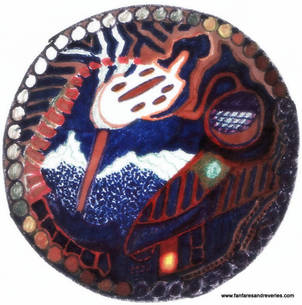 Pen & ink, 3" diameter, G. Tompkins Pen & ink, 3" diameter, G. Tompkins Journeys & Visions Along the Urban Landscape Often we encounter glimpses of things which might ordinarily escape our notice. In the 1960's I frequently traveled via the Jersey Central Railroad to Newark from the station at Dunellen on my way to New York City. As you approach the more densely populated areas, one notices a more commercial, urbanized landscape and fewer pockets of picturesque trees. Yet I distinctly remember gazing dreamily northwards from the windows of the eastward-bound train as I prepared for a day in the City. To Gauge the Map of Tracks, Trees & Hills As you approach Plainfield, there is a point somewhere in the vicinity of Leland Avenue which affords an expansive view to the north. On one eventful train trip many years ago, I just happened to casually glance in this direction and noticed a spectacular sight which I had never seen before. Just overhead from the dense pocket of trees to the north, in the distance I could discern a beautiful building shining in the early morning sun. It was on the southern side of one of the Watchung Hills, looking like a magnificent palace, a stone castle or royal chateau. As the train crosses Terrill Road, you can still see this building quite clearly, but the image fades as you edge toward Martine Avenue, eventually dropping from sight as you approach Westfield Road. This view lasts only a brief moment on the moving train, then vanishes altogether, not to be seen again until the long homeward-bound journey. A Vision Upon the Watchung Hills The beautiful building within sight of the train is known as Mount Saint Mary Academy, an independent school which offers a college preparatory program for young women, 9th through 12th grade. Situated in Watchung, just north of Plainfield along Route 22, the Academy is under the direction of the Sisters of Mercy of the Mid-Atlantic. The first building to house the Academy was erected in 1908, unfortunately destroyed by fire in 1911. The new building (the present structure) was rebuilt in 1912, featuring a prominent bell tower with the inscription "Gratias Agamus Domino Deo Nostro," (We give thanks to God). Whenever I had occasion to travel via the Jersey Central, I would earnestly look northwards to see if I could spot the bell tower and the imposing facade of this magnificent building. On certain days, if the weather was overcast and grey with slight rain or fog, you might totally miss the vision upon the hill and the grounds adjacent to the Academy. If the trees seemed to grow somewhat taller, the view could be completely cut off and suspended from sight. Sometimes you really had to search the horizon or you might miss the occasion in a matter of moments. Andante pastorale from Symphony No. 3 by Composer Carl Nielsen (1865-1931) There is a passage in this remarkable symphony (FS 60, Op. 27 "Sinfonia espansiva," composed in 1910-11) where two soloists enter the second movement and sing wordlessly in the "Ah" vowel, echoing one another and sounding profoundly beautiful together amidst the splendor of the orchestra. These two voices seemingly appear out of nowhere and rise to glorious heights of harmonious expression, drawing the listener in toward one of the most transcendent moments in all of Classical music. I find this music to be thrilling and resplendent in an all-encompassing manner, especially in the version offered by Dacapo with Michael Schonwandt conducting the Danish National Radio Symphony Orchestra. In this performance, Inger Dam-Jensen sings the soprano part and Poul Elming the tenor part, recorded in cooperation with Danmarks Radio. (This recording is also available on Naxos.) A Brief But Glorious View The second movement of Nielsen's 3rd Symphony illustrates how a moment of divine music may inspire us in an extraordinary and long-lived manner. It is just a brief interlude in the overall structure of the Symphony, a passage which Nielsen refers to as "the purest idyll." Yet this passage reflects a visionary summit peak, a moment where voices soar wordlessly over the enchantment of the symphony orchestra. It is a reminder of the art of perspective, a vital reflection of looking upward and outward and noticing something we might have previously missed. From the train to a brief vision of the mountainside Academy, from a momentary passage in music, or from the written notes of Carl Nielsen regarding his Symphony, we may each engage "...a certain expansive happiness about being able to participate in the work of life and the day and to see activity and ability manifested on all sides around us." 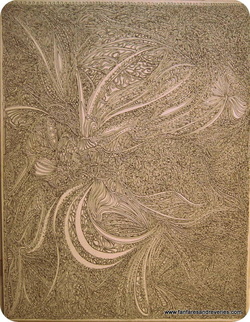 Pen & ink, 15"x19", G. Tompkins Pen & ink, 15"x19", G. Tompkins A Journey Across An Imaginative Landscape In the late 1960's I often had occasion to travel via the Jersey Central Railroad from the Dunellen train station all the way to Newark, traversing the Hudson Tubes and eventually arriving at New York City. As an Art student enrolled in the New York Art Semester at Drew University, I was expected to visit museums and galleries, engage in class field trips to meet artists in their studio environments, and to keep a noteworthy journal of my thoughts, perceptions and observations. The Jersey Central provided a convenient method of commuting to NYC and I quickly became fond of train travel as an alternative to taking a car or bus to the City. The route began in Dunellen, traveled through Plainfield, Fanwood, Scotch Plains, Westfield, Garwood, and Cranford, finally reaching the great train station at Newark, a place of enormous overhead structures and miles of parallel tracks packed with passenger trains. The View From a Train Window There occurs a brief moment as you leave the train station at Fanwood heading East where the tracks curve slightly to the right and the train allows a view into the backyards of some vintage homes clustered along a stretch of wooded parcels of land to the North of the tracks. At this point the train seems to be at a somewhat higher elevation, perhaps as much as 10 feet higher than the backyards of the homes, giving the effect of looking downwards into a miniature canyon or autumnal valley. Just at this juncture of time and space, I would remember the lines from one of the songs by Judy Collins on her 1967 album "Wildflowers," a critically acclaimed album arranged and conducted by Joshua Rifkin. All of the songs on that recording are gems, but the one which keeps coming back to me is entitled "Albatross," one of the most beautiful works of art which Judy ever recorded. The first lines read, "The lady comes to the gate dressed in lavender and leather...," a poetic entry into a visual field of splendor. The song continues, "...She hears the steeple bells ringing through the orchard all the way from town." I do not remember if there were any gates that could be seen from the train windows, but there were certainly plenty of places that a gate might provide a beautiful entryway into these lovely homes with their petite backyards. Similarly one could occasionally view a church steeple briefly at some distance from the tracks, or imagine the bells heard in each neighborhood, or envision the neat topography of land laid out from the town center to the small wooded parcels dotted along the train tracks. A Poetic Song with Evocative Images Judy's song continues with vibrantly resonant language, pinpointing the grandeur of the human landscape as well as the natural landscape. "Many people wander up the hills from all around you, making up your memories and thinking they have found you." As I peer through the train windows I begin to see the history of the moment and the pattern of the events and the people in my life. From station to station, from track to track, from city to city....these thoughts and perceptions become the dialogues of a young art student transformed via time and the ongoing process of maturity. Judy speaks of "the embroidery of life" and then paints a picture which becomes indelibly etched in my artistic heart and mind. "...And in the night the iron wheels rolling through the rain, down the hills through the long grass to the sea." Joshua Rifkin's arrangement and orchestral conducting soar with an affinity for Judy's lovely voice during this powerful passage. There is a rise and fall of evocative feeling in this special music, conjuring images which remain impressively vivid. Final Impressions Judy's song "Albatross" closes with some perceptive observations on the continuity of life. "Day and night and day again, and people come and go away forever." Who hasn't reflected upon our days of schooling or early family life or days spent working or travelling or interacting with others via relationships? Wave upon wave of events may occur as cycles existing in time, like the train excursions via the Jersey Central, peering out the train windows and recording the impressions one may encounter or visualize along the way. Then in the closing lines to the song, Judy so eloquently, so elegantly, quietly recites a marvelously resonant and poetic message, "Come away alone, ...come away alone....with me." This is the memorable language of love, a time and a place which can be viewed as a tender invitation, a noble passage, an everlasting entrance or an eternal gate. 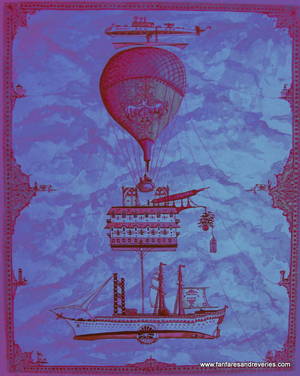 Pen & ink w/watercolor, 12 x 14", Glenn Tompkins Pen & ink w/watercolor, 12 x 14", Glenn Tompkins Remembrance As a Path Toward Understanding After the young Martin falls off the spinning carousel, the effects of focused light and Bernard Herrmann's music add tremendous drama to the overall evocation of this scene in "Walking Distance." As the light fades away, one by one the children leave the darkened, now silently still carousel horses, revealing a brief gallery caught by the camera. A succession of wonderfully carved horses momentarily fills the screen, each one cast in motionless pose, as if suspended in frozen animation. Herrmann's accompanying music brilliantly underlines the emotional sadness of this powerfully reflective glimpse into the human heart. We sense Martin's coming-of-age as he grapples with these uniquely personal events, a time of intense introspection as well as a time of endearing compassion. As the music and dramatic lighting bring key elements to the foreground, Martin's father (played by Frank Overton) steps forward after meandering through the maze of carousel horses still visible in the distance. A Father Speaks to His Son The quality of Rod Serling's writing can be seen and heard in the next few moments of this luminous story. Martin's father finds his adult son sitting at the carousel's edge holding his hand to his head in anguish over the series of recent events. The dad sensitively approaches his son with the kindly spoken words, "I thought you'd like to know the boy will be alright." Here there are intimations of healing for both the physical and the hidden aspects of Martin's life. "I know who you are," the dad continues, revealing that Martin's license and identity have been confirmed through the wallet he accidentally dropped at his parent's home earlier that evening. "You've come a long way from here and a long time....How? Why? ....You know things that will happen. There's no room, no place. You have to leave here." Martin listens attentively to his father speak these heartfelt words, carefully measuring each phrase with an eagerness to fully understand his present predicament. "It was once your summer....It's his summer now," (referring to the young 11-year-old boy). "We only get one chance. Maybe there's only one summer to a customer." Instead of looking backwards, Martin's father suggests tenderly, "Try looking ahead." Martin agrees with his dad, beginning to sense the wisdom imparted to him through this intervention in time. As the carousel silently starts up, Martin hops aboard to gain another ride, this time with a smile, with renewed understanding, now on a transitional journey toward the closing scene. Final Scene of "Walking Distance" The last scene revisits the drug store/ emporium which first appeared at the beginning of this story. Martin discovers a lively perspective as he enters this crowded atmosphere in the store which features his favorite three-scoop chocolate ice cream soda. Now there is loud music, dancing teenagers, and a different soda jerk at the fountain. Initially desiring to order his favorite dessert, Martin strikes up a conversation with the fountain attendant, but then decides to forgo the treat. The attendant asks about Martin's slight but noticeable limp and difficulty in getting up from the counter. Martin says that he injured his leg when he was eleven years old and fell off a merry-go-round. The attendant says, "Merry-go-round? They tore it down....condemned it!" Rod Serling's closing narration speaks eloquently and endearingly about the almost universal desire to go home again, "...that a man might not have to become old, never outgrow the parks and the merry-go-rounds of his youth." 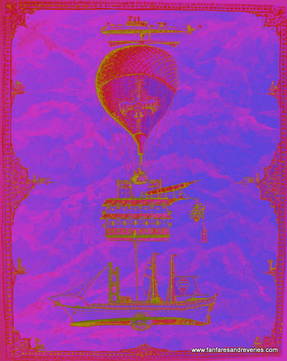 Pen & ink with watercolor, 9" x 13", G. Tompkins. Pen & ink with watercolor, 9" x 13", G. Tompkins. Passages of Time - The Carousel & Bandstand Rod Serling's "Walking Distance" exhibits some bittersweet moments for a man in search of his past. When Martin Sloan's parents do not recognize him, there is a sense of loss and sadness at the doorstep of the home he once knew. In the next adjacent scene, we briefly meet a young man who is admiring a brand new car, freshly minted out of Detroit. As Martin takes in the shiny visage before his very eyes, the young man states that the car is a 1934 Roadster, leaving the distinct impression that this event is taking place through an incredible regression in time. Now Martin begins to understand this inexplicable excursion beyond the rational elements he initially expected via his revisit to Homewood. Atmosphere & Drama in a Series of Events The next scene is one of the most atmospheric moments ever presented on "The Twilight Zone." Having left the young man with the 1934 Roadster behind, we now realize that nightfall has descended upon the neighborhood, with church bells gently ringing in the distance. Lampposts along the street radiate their distinctive glow as interior lights fill the windows of Homewood's stately houses. At this moment I am reminded of the memorable artwork of Belgian surrealist Rene Magritte (1898-1967), an artist who often captured that otherworldly atmosphere just between sundown and early evening. One such masterpiece is entitled "The Empire of Light" painted between 1950 and 1954, a lovely composition delineating some of the enchantment and charm of this unique time of day, with the light of the sky acting as counterbalance to the positively mysterious glow emanating from streetlamps and interior houselights along the boulevard. One cannot perfectly distinguish whether Magritte has painted either a day scene or a night scene, yet the evocation of transient light remains fascinating and almost hypnotic in overall effect. Unique Perspectives Rod Serling's voice-over enters this atmospheric night scene, a moment of literary and philosophical insight adding dramatic pause toward further contemplation. "A man can think a lot of thoughts and walk a lot of pavement between afternoon and night." Here we begin to grasp this integration of varied elements, in retrospect realizing both the short and long passages of distance and time, from the country gas station to the Homewood sign to the people who live in this rather special place. Serling continues as narrator, "Memory suddenly becomes reality....Martin Sloan is back in time....his resolve is to put in a claim." Full realization of all these unusual elements will take place as Martin comes face to face with a powerfully emotional event from his childhood. A chance, a time of life and a revisit will help to clarify the hazy textures of Martin's treasured youth. 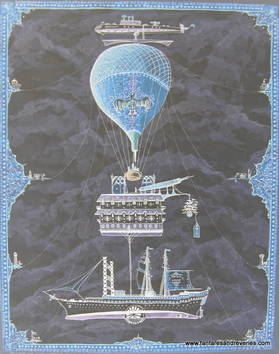 Pen & ink with watercolor, 8" x 11", G. Tompkins Pen & ink with watercolor, 8" x 11", G. Tompkins The Music of Bernard Herrmann (1911-1975) One of the special aspects to "Walking Distance" is the magnificent contribution made by composer Bernard Herrmann via his evocative musical score which accompanies Rod Serling's heartfelt, wistfully remembered story. Few thirty-minute television programs ever beheld such fabulous musical composition as the gifted passages heard throughout this neatly crafted episode of The Twilight Zone. Herrmann has long held a rather distinguished place among soundtrack composers in both film and television. In 1974 and 1975 Decca/ London Records released two blockbuster recordings on the London Phase 4 Stereo label which showcased some of Herrmann's best scores for film. "The Fantasy Film World of Bernard Herrmann" features the composer conducting the National Philharmonic Orchestra in scores from "Journey to the Center of the Earth," "The Seventh Voyage of Sinbad," "The Day the Earth Stood Still," and "Fahrenheit 451." Some interesting liner notes are provided by the composer describing his designs for each individualistic score. The second disc is entitled "The Mysterious Film World of Bernard Herrmann," again featuring the composer conducting the National Philharmonic Orchestra at Kingsway Hall, London, all offered in London's superlative Phase 4 Stereo sound. This album highlights some selections from "Mysterious Island," "Jason and the Argonauts," and "The Three Worlds of Gulliver." These two albums became sonic favorites for many audiophiles, testing the full range of the audio spectrum via high-powered amplifiers, large speakers/ monitors and fine-quality turntable, cartridge & arm combinations. A Glimpse Into the Interior of "Walking Distance" After Martin Sloan finishes his conversation with the soda fountain attendant at the drug store, the scene switches to a wistful glance upon the beautiful boulevards and sidewalks of Homewood, as a walk down the street enlivens the cherished memories of a youth spent amid idyllic surroundings. The lovely trees, lush landscaping, neatly manicured lawns and stately homes instill within Martin a longing for the past as he takes in the brilliant sunlight and notices the bicycles and barking dogs of this enchanting neighborhood. A chance meeting with a young boy playing on the street allows Martin to reminisce about his early memories, but this scene ends abruptly when the little boy says, "You're not Marty Sloan...," and then runs away oblivious of the official driver's license which Martin attempts to offer as proof of his identity. Martin then walks to the park and notices an ice cream vendor whereupon he says to a local resident "Nothing quite as good as Summer, being a kid." In a wild twist of historical imagination, Martin then sees a young man carving his initials on the wooden post of a bandstand, remembering that he did the same thing at age eleven many years ago. When Martin approaches the young man, he sees that it is really him at age 11, the same way he looked at that age. The young man runs away fearful of being caught. At this point Martin decides to re-visit his old house, the place where he grew up and where his parents once lived. He rings the bell, but his parents don't recognize him. As Martin looks through the screen door at the front of the house, one notices a grey haze, a separation between the present and the past, an unbridgeable gap of understanding between the adult Martin and the young Martin we have just met moments ago. Martin Sloan finds that he is not known in this version of Homewood, far afield from the idyllic childhood which he still cherishes and remembers from his youth. |
Author
|
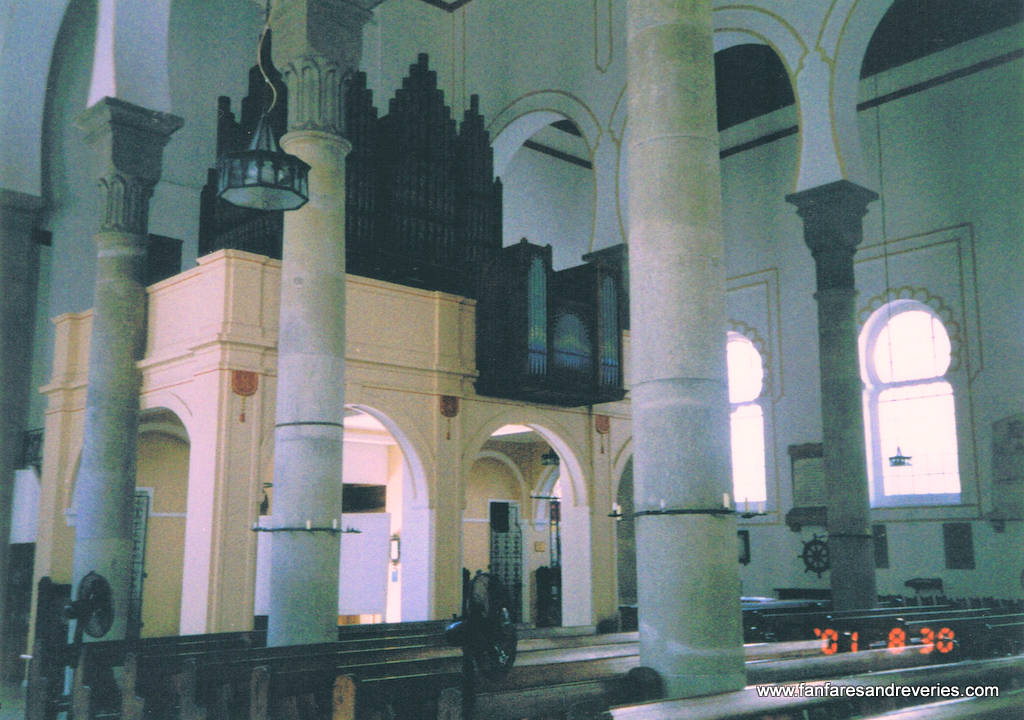
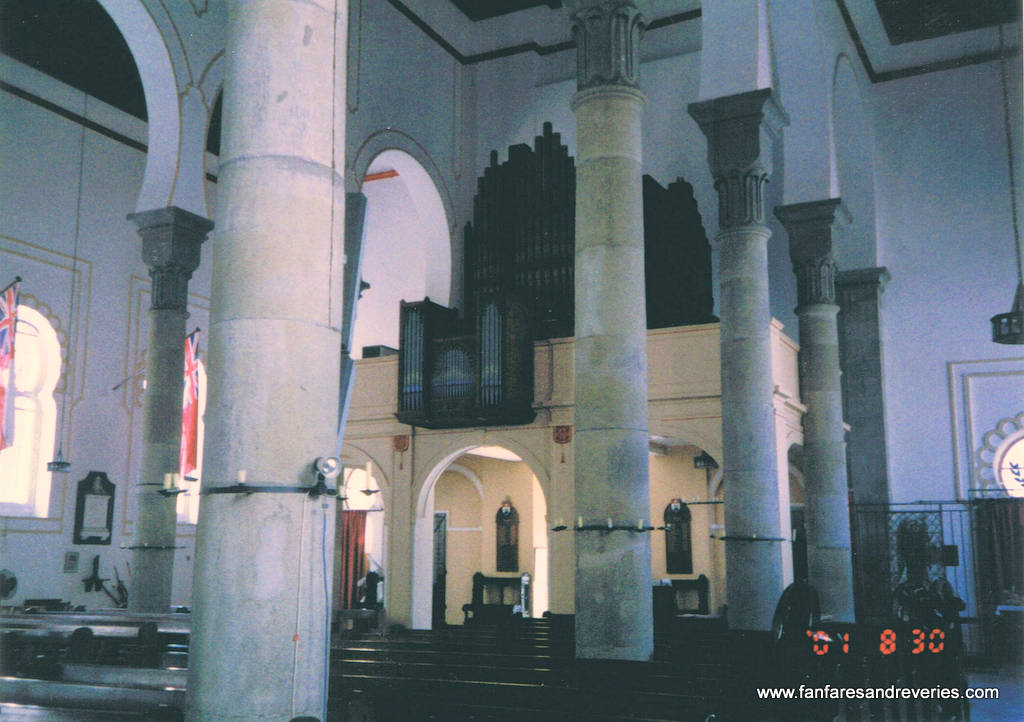
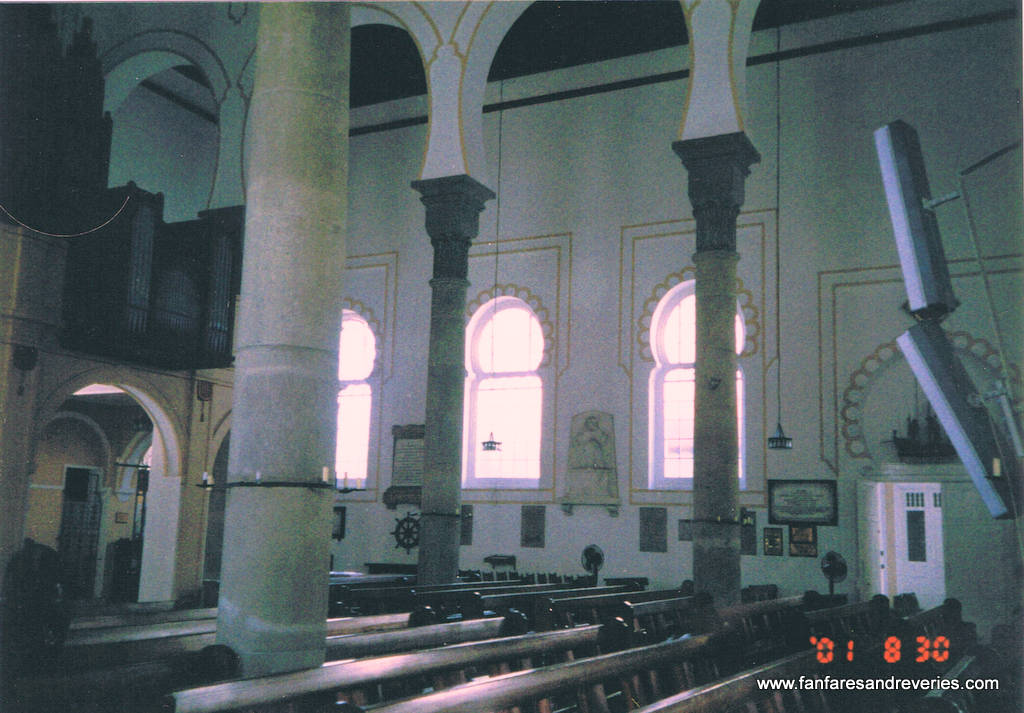
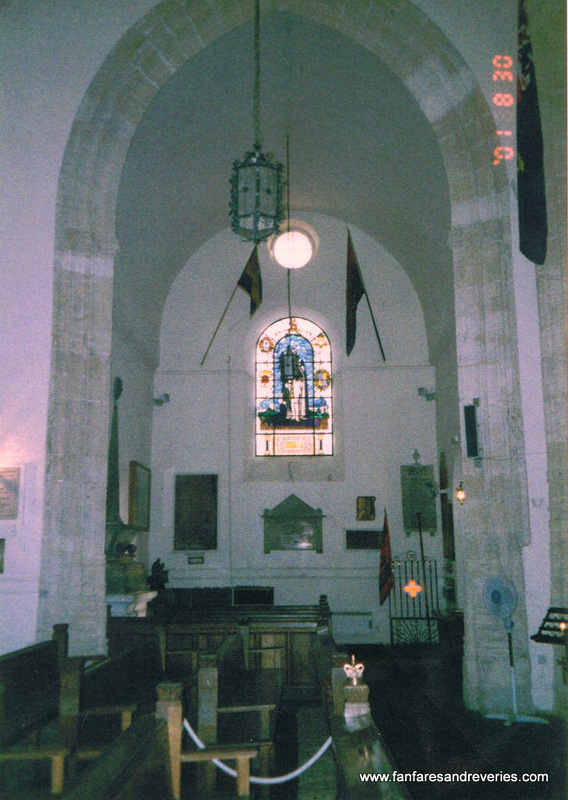
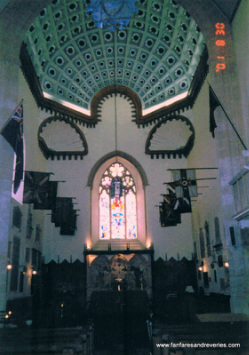
 RSS Feed
RSS Feed